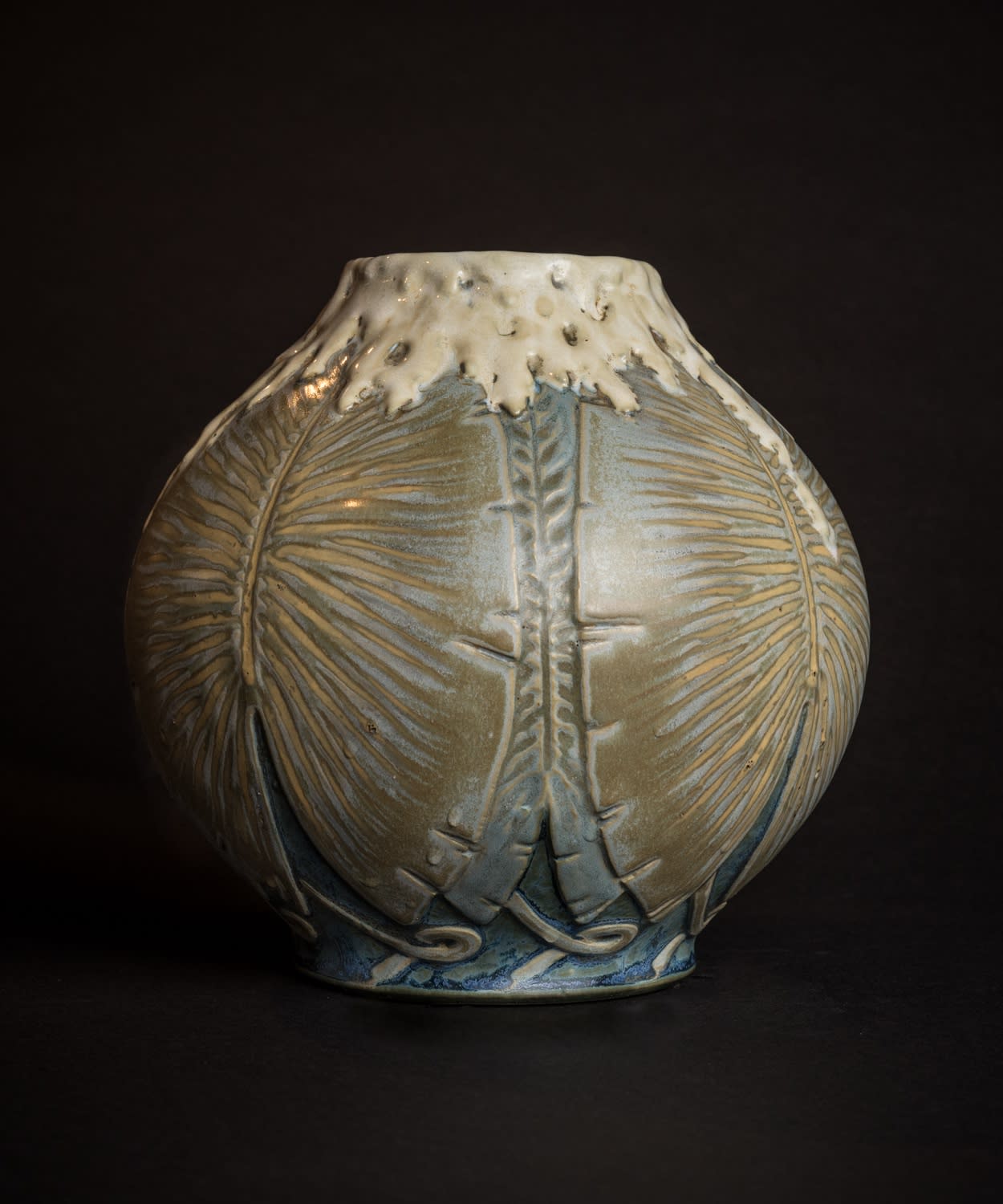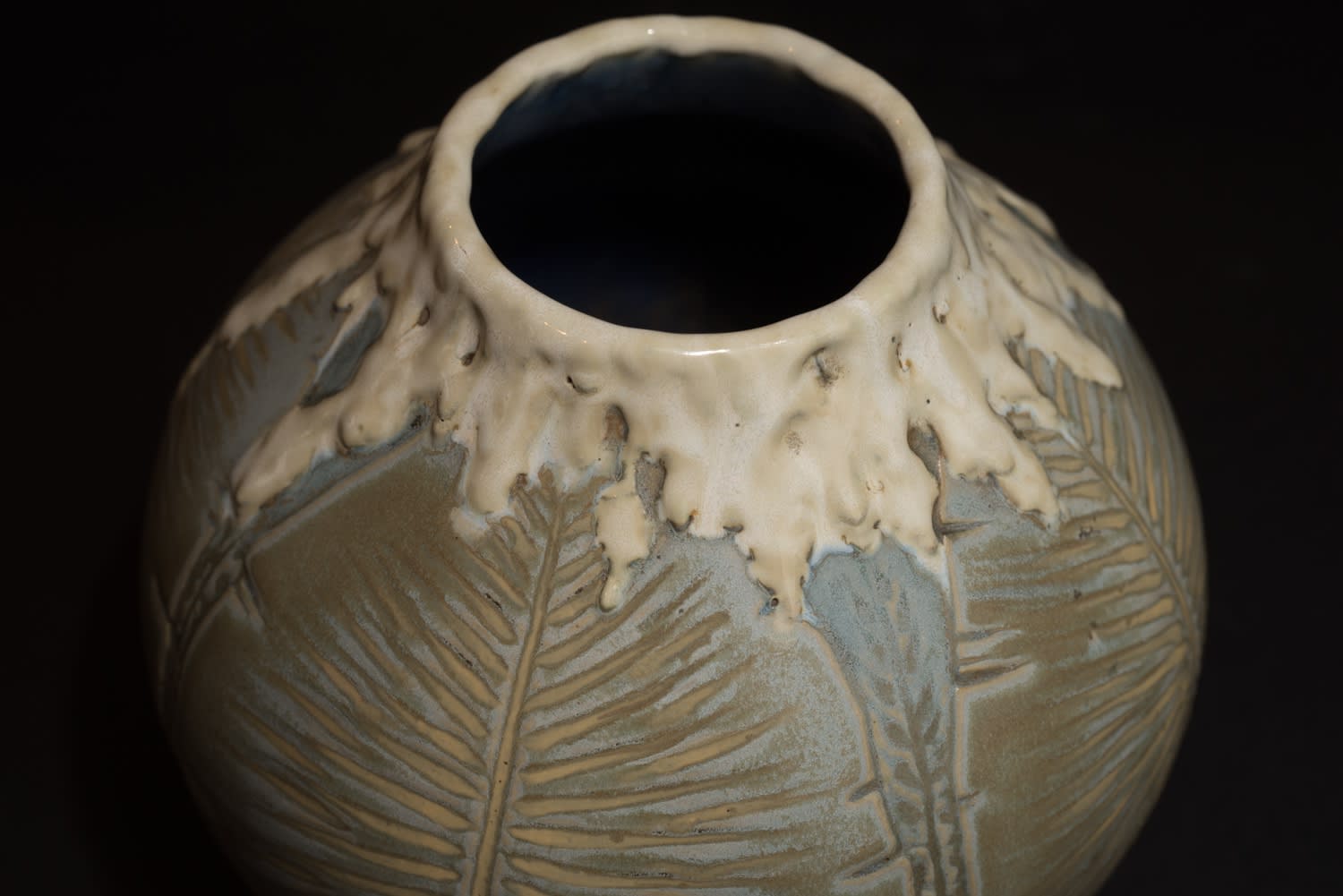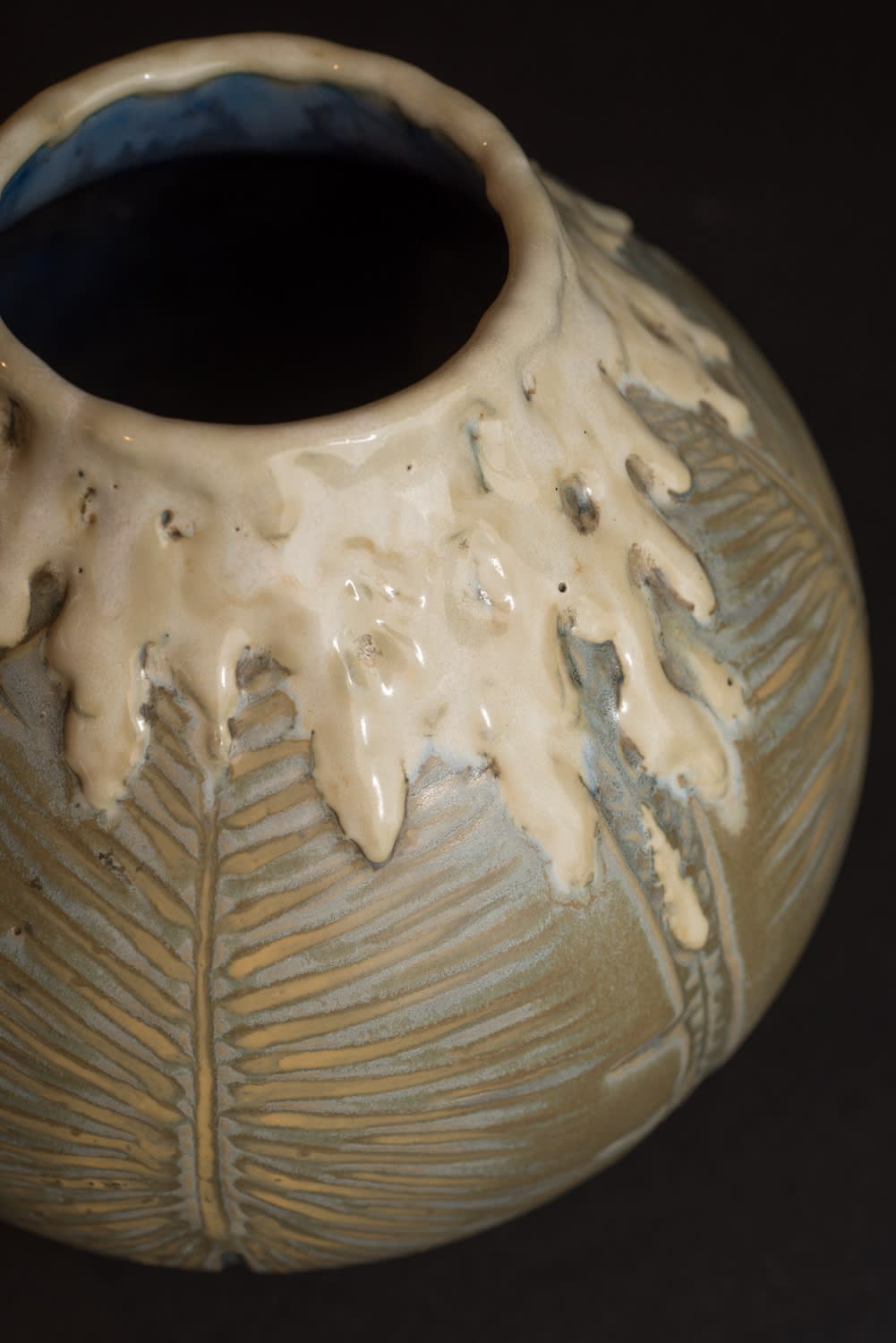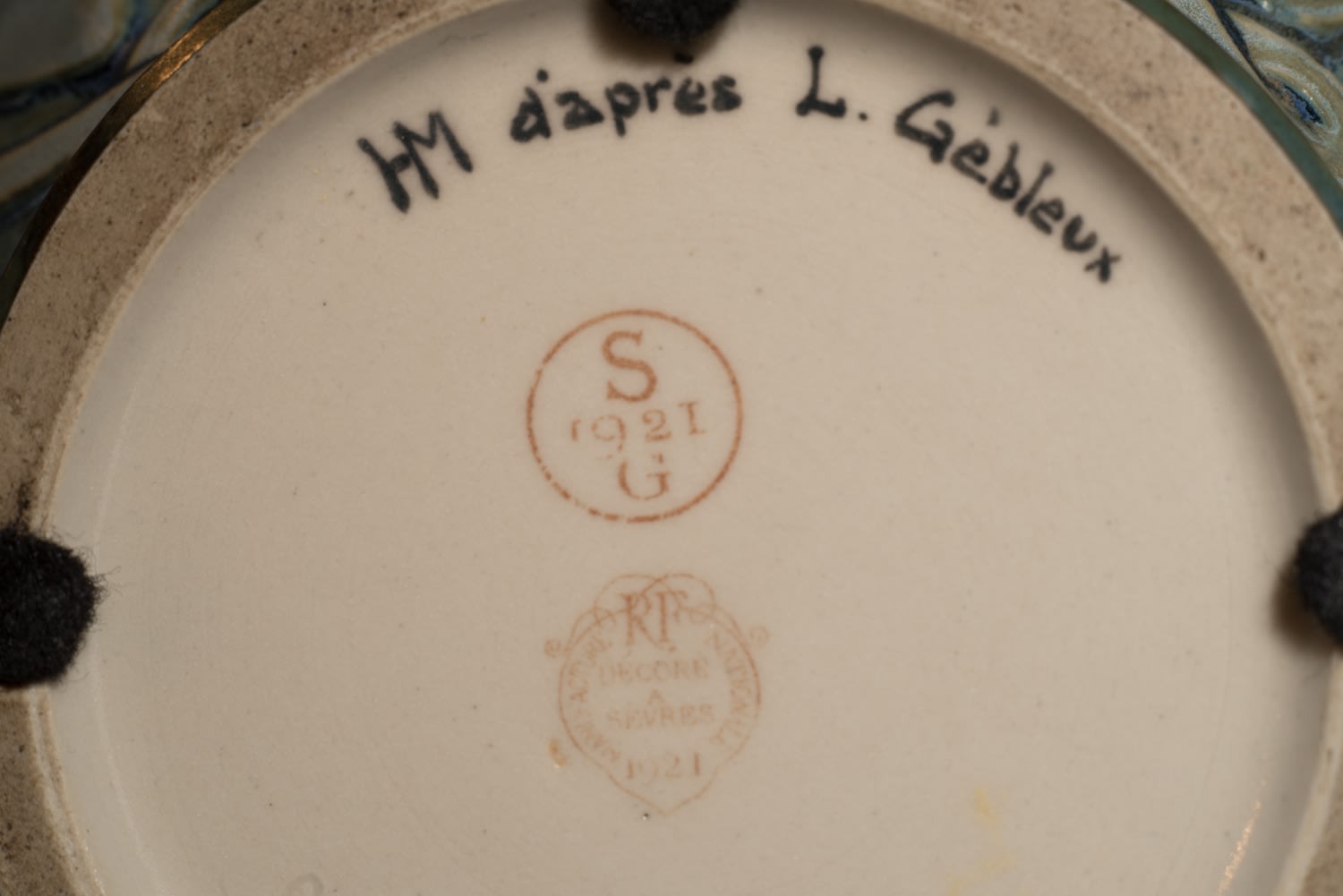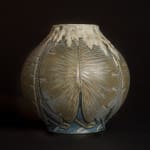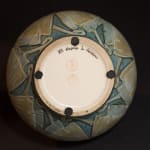The Manufacture nationale de Sèvres French, 1756-Present
6.5h x 6w inches
Further images
This seductive vase fits firmly within the artistic period known in France as Le Style Moderne, 1910-1925, and is exemplary of Sevres’ artistic development in the first quarter of the twentieth century which sprung from Japonisme. The Japanese aesthetic tremendously influenced French artists in search of an approach to art as a means of expressing modernity. The distinct characteristic in ceramic ware from the Art Nouveau style in the first years of the new century to freely cover a vase’s entire surface decoration was derived from the Japanese goods that began to flood the European market in the preceding decades. By the 1920s, Sevres had set itself apart with its distinctively modern approach. Leonard Gebleux began as a designer and decorator for Sevres in 1883. One of the artists who helped modernize the porcelain manufacturer with its origins in pre-Revolution France, Gebleux took on work in stoneware and was an early exponent of acid etching as a surface lightener on glazed products. He assumed the role of Artistic Director in 1920, and therefore, much of Sevres’ ground-breaking style is attributable to his vision. Forms took on an increasingly geometric simplification. Decorative motifs covering the object’s surface became more stylized. By 1925 in Paris at the Exhibition des Arts Decoratifs et Industriels, a name was given to describe the new aesthetic which ceramists from Sevres had helped to develop, Art Deco. Maurice Herbillon enjoyed a long career as a decorator at Sevres from 1901-1941. Of particular note is his collaboration with Emile-Jacques Ruhlmann, the consummate taste-maker of the Art Deco style.

